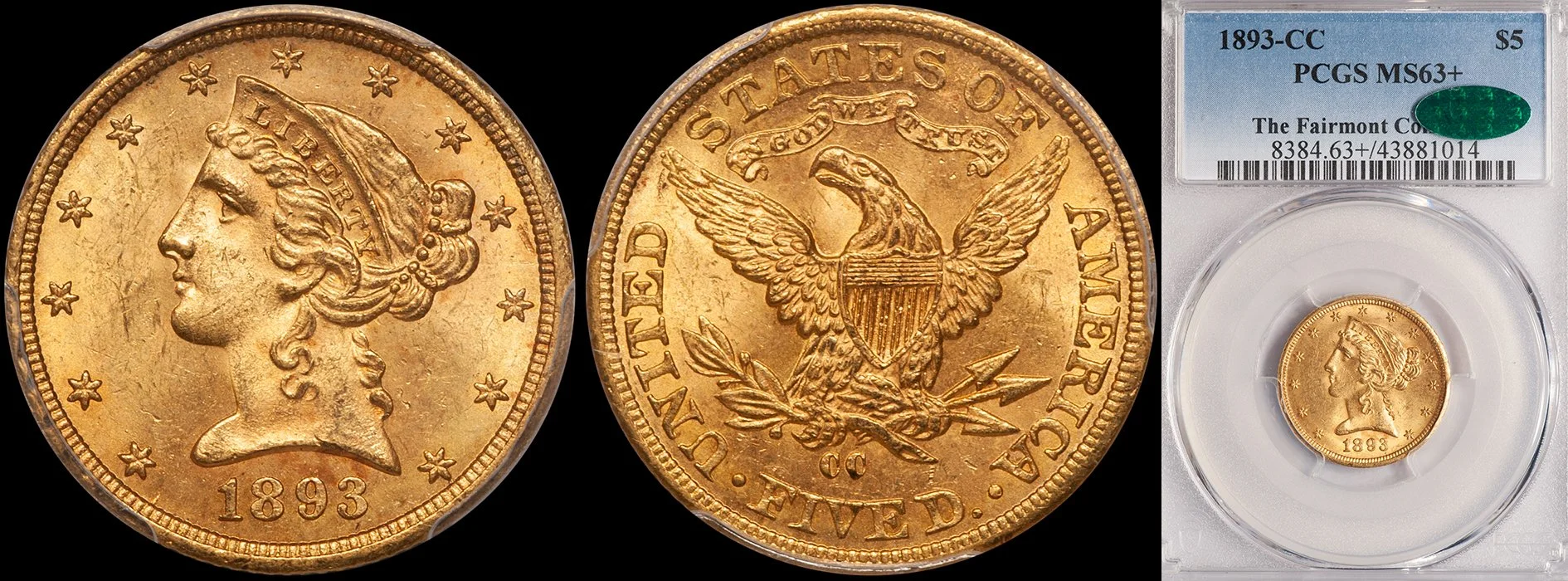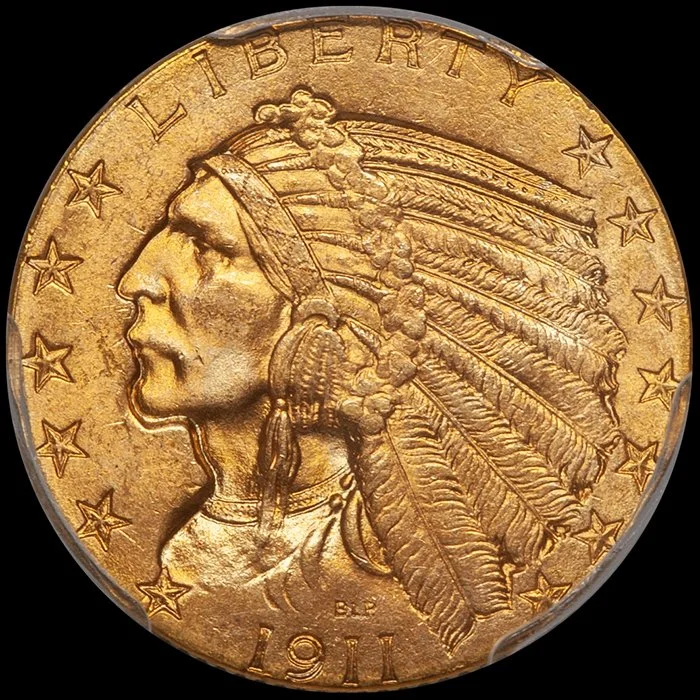The Ten Most Popular New Orleans Gold Coins
/To get you ready for my forthcoming book on New Orleans gold coinage I am planning a series of articles on these coins. Look for these to run between February and May 2006 and look for the new book to be available around June. These ten coins are, in my opinion, the most popular gold coins struck at the New Orleans mint. They are interesting for one or more of the following reasons:
-
Low Mintage Figures
Unique Design
Interesting historical association
Collectibility
If a coin possesses more than one of these attributes, it is, obviously, very popular. Simply put, the better the story a coin has to tell, the easier it is to explain to a potential buyer. As a dealer it is much easier for me sell a “self explanatory” coin than one that requires a long, drawn-out story.
Without further adieu, here is the list of the Ten Most Popular New Orleans Gold Coins:
1. 1849-O Gold Dollar: With an original mintage figure of 215,000 the 1849-O gold dollar is probably the most available of the ten coins on this list. It is also one of the most affordable with pleasing AU examples currently selling for well under $1,000. The most obvious reason for the popularity of this issue is that it is the first Gold Dollar produced at the New Orleans mint. Some of the less obvious—but still legitimate—reasons for the popularity of the 1849-O include the fact that it is a very well produced issue and that it can be combined with the 1849-C and 1849-D gold dollars to create a very interesting first-year-of-issue set. We recommend purchasing examples that grade MS62 or better.
2. 1855-O Gold Dollar: Coinage of the Type Two gold dollar began in 1854 and lasted until 1856. During this three year period, the New Orleans mint produced Type Two gold dollars only in 1855. A total of 55,000 examples were struck and survivors are plentiful in lower grades. This issue is scarce in MS60, rare in MS62 and very rare in MS63 or better. In recent years, prices for many high grade Type Two gold dollars have dropped as these coins have proven to be less rare than formerly believed. But prices have risen for the branch mint issues due to their unique design and one-year type status. We strongly recommend purchasing nice original examples in AU50 and above.
3. 1839-O Quarter Eagle: The short-lived Classic Head design was created in 1834 and it lasted until 1839. The only Classic Head quarter eagle was struck in 1839. Coincidentally this happens to be the first year of issue for any New Orleans coin of this denomination. First year of issue, one-year type, unique design…can you say popular coin? Only 17,781 were struck and an estimated 350-400 are known. Most 1839-O quarter eagles are found in VF and EF grades and nice AU’s are scarce. Fewer than two dozen remain in Uncirculated with most of these in the MS60 to MS61 range. We love this date in nearly any grade but recommend examples that grade AU50 and above.
4. 1854-O Three Dollar Gold Piece: Can the story get any better than this: the only Three Dollar gold piece, one of only two Southern issues of this denomination (and the other, the 1854-D is priced out of the range of most collectors) and a coin issued during the first year of this denomination. The 1854-O is common and overvalued in lower grades but it is very scarce in properly graded AU55 and above. This is an issue that is typically overgraded by PCGS and NGC and most pieces in slabs are unoriginal with poor surfaces and unappealing color. Early die state examples which show a full date and mintmark and strong wreath detail deserve to sell for a strong premium over typical later die states.
5. 1893-O and 1894-O Half Eagles: With few exceptions the No Motto New Orleans half eagles produced between 1840 and 1857 are extremely rare in Uncirculated. The With Motto issues produced in 1893 and 1894 are more available in higher grades and more within the budget of most collectors. Of the two, the 1893-O is the more common but this issue is surprisingly scarce in properly graded MS61 or better. The 1894-O is quite rare in Uncirculated and seems undervalued at current price levels. We recommend purchasing nice original pieces graded MS60 and above. Watch out for coins graded MS60 and MS61 that are excessively abraded.
6. 1909-O Half Eagle: After discontinuing production of half eagles in 1894, this denomination was resurrected in 1909. The 1909-O half eagle production was relatively small (just 34,300 pieces) and this issue has an immediate appeal for a number of reasons: it is a one-year type, it is the only 20th century half eagle produced at a Southern branch mint and it was the final gold coin of any denomination produced at the New Orleans mint. In the EF40-AU53 grade range this issue is fairly common and arguably a bit overvalued. But it is a very rare coin in properly graded Uncirculated and examples that grade MS62 or better are among the most coveted 20th century American gold coins. We recommend PCGS graded examples in AU55 and above.
7. 1892-O through 1906-O Eagles: Instead of choosing a specific date from this era, I chose the entire date run of ten coins. These are the most available New Orleans gold coins in higher grades (in this case MS60 or above) due to the fact that substantial numbers of coins were shipped overseas to Europe and did not circulate domestically. The availability of these dates in higher grades is exactly the opposite of the pre-Civil War issues which are nearly unobtainable above MS60. Most of the 1892-O through 1906-O eagles can be found in the lower Uncirculated grades for under $2,000 and these are often attractive coins with good color and luster. Occasionally, dates such as the 1901-O, 1904-O and 1906-O can be found in MS63 or even MS64. Despite the scarcity of these coins they can still be purchased for under $5,000 in some cases. We love the values of all these dates and strongly recommend coins graded MS62 and above.
8. 1850-O Double Eagle: In the past few years, the popularity of New Orleans double eagles has increased tremendously. The formerly-underrated 1850-O has become one of the more popular issues in the series. The major reason for this issue popularity is obvious: it is the first New Orleans double eagle. It is also an issue that is reasonably common in lower grades and has been readily available at auction and via private treaty to new collectors. Most people are still not aware of exactly how scarce the 1850-O is in higher grades. We doubt if more than two or three Uncirculated examples are known and properly graded AU55 to AU58 pieces are very rare. It is still possible to acquire a nice circulated 1850-O in the $5,000-10,000 range but most pieces in PCGS and NGC holders are way overgraded. Minimally abraded pieces with good color are very rare and worth a strong premium over typical examples.
9. 1861-O Double Eagle: There may not be another New Orleans gold coin with the historical significance of the 1861-O double eagle. At various times during 1861, New Orleans double eagles were produced by the Federal mint and by the Confederacy. (Shameless plug: the mystery behind these coins is unraveled in my new book on New Orleans gold due out this summer). Most of the survivors from the original mintage figure of 17,741 are very well worn and this is compounded by the fact that the 1861-O double eagle is a poorly produced issue. In AU, the 1861-O is quite rare and it is extremely rare in Uncirculated with just two to four known. Price levels have increased significantly for the 1861-O double eagle in recent years and we can no longer include this in lists of undervalued issues as we did in the past. However, original EF and AU examples are seldom seen and would make a great addition to any advanced collection of New Orleans gold coins.
10. 1879-O Double Eagle: The 1879-O double eagle is another coin that is desirable for a multitude of reasons: it is the only Type Three issue from this mint, it is the final New Orleans issue of this denomination and it is a very low mintage date with just 2,325 struck (the second lowest figure of any New Orleans double eagle). As with the 1861-O double eagle, the level of popularity (and prices) for this issue have soared in recent years. Any 1879-O with good eye appeal and clean surfaces is very rare and very desirable.















